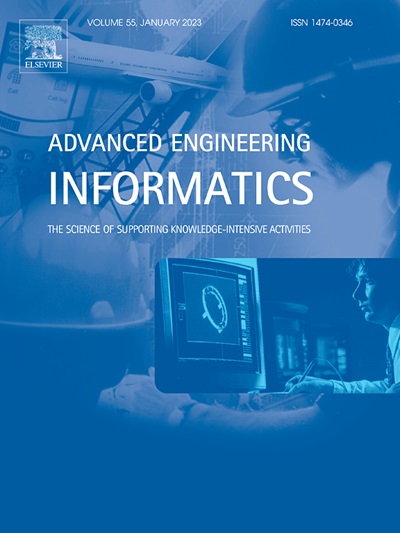Federated learning system eliminating model drift in distributed edge computing: Theoretical analytics and application on pit engineering state monitoring
IF 8
1区 工程技术
Q1 COMPUTER SCIENCE, ARTIFICIAL INTELLIGENCE
引用次数: 0
Abstract
In internet of things (IoT) with smart terminals, data is generated at edges in stream. Edge computing, where AI models are conducted on smart terminals, caters to this trend and is increasingly adopted. On levels of IoT, it places high demands on real-time performance and generalization of deployed models. Federated learning (FL) promises to meet these demands because of distributed paradigm. However, two challenges exist: (1) for incremental data on edges, mini batch and central FL training causes higher risks of data leakage; (2) drifts exist between global and local models while more difficult to reconcile in distributed edge computing. To solve challenges mentioned, measures are necessary to protect and coordinate FL process orient edge incremental data in IoT. In our study, we propose a blockchain-assisted federated learning system named BFLIoT. BFLIoT features flat, drift-resistant and safe: (1) BFLIoT decentralizes FL by blockchain and lets FL process operate fully based on edges without cloud participation; (2) BFLIoT utilizes improved federalized proximal (FedProx) algorithm and adjusts training parameters ( and ) to fully eliminate drift during aggregation; and (3) privacy budget () for personalized differential privacy (DP) based on , is employed considering both data protection and model aggregation. We verified BFLIoT on open datasets and applied BFLIoT to pit engineering edge monitoring system (PEEMS) we developed. FL task of predictive algorithm orient monitoring items verifies BFLIoT is effective in solving two problems presented. BFLIoT provides effective and safe strategies maintaining and optimizing AI models orient distributed edge computing.
消除分布式边缘计算中模型漂移的联邦学习系统:理论分析及其在基坑工程状态监测中的应用
在具有智能终端的物联网中,数据是在流的边缘产生的。在智能终端上进行人工智能模型的边缘计算迎合了这一趋势,并被越来越多地采用。在物联网层面,它对实时性和部署模型的通用性提出了很高的要求。由于分布式范式的存在,联邦学习(FL)有望满足这些需求。然而,存在两个挑战:(1)对于边缘增量数据,小批量和中心FL训练导致数据泄露的风险较高;(2)在分布式边缘计算中,全局模型与局部模型之间存在漂移,且难以协调。为了解决上述挑战,有必要采取措施保护和协调物联网中面向FL过程的边缘增量数据。在我们的研究中,我们提出了一个名为BFLIoT的区块链辅助联邦学习系统。BFLIoT具有平坦、抗漂移和安全的特点:(1)BFLIoT将FL分散到区块链,使FL过程完全基于边缘运行,无需云参与;(2) BFLIoT采用改进的federalized proximal (FedProx)算法,调整训练参数(λ和γ),充分消除了聚合过程中的漂移;(3)考虑数据保护和模型聚合,采用基于λ, γ的个性化差分隐私(DP)隐私预算(δ)。我们在开放数据集上验证了BFLIoT,并将其应用于我们开发的矿井工程边缘监测系统(PEEMS)。面向监测项目的预测算法FL任务验证了BFLIoT在解决两个问题上的有效性。BFLIoT为维护和优化面向分布式边缘计算的人工智能模型提供了有效和安全的策略。
本文章由计算机程序翻译,如有差异,请以英文原文为准。
求助全文
约1分钟内获得全文
求助全文
来源期刊

Advanced Engineering Informatics
工程技术-工程:综合
CiteScore
12.40
自引率
18.20%
发文量
292
审稿时长
45 days
期刊介绍:
Advanced Engineering Informatics is an international Journal that solicits research papers with an emphasis on 'knowledge' and 'engineering applications'. The Journal seeks original papers that report progress in applying methods of engineering informatics. These papers should have engineering relevance and help provide a scientific base for more reliable, spontaneous, and creative engineering decision-making. Additionally, papers should demonstrate the science of supporting knowledge-intensive engineering tasks and validate the generality, power, and scalability of new methods through rigorous evaluation, preferably both qualitatively and quantitatively. Abstracting and indexing for Advanced Engineering Informatics include Science Citation Index Expanded, Scopus and INSPEC.
 求助内容:
求助内容: 应助结果提醒方式:
应助结果提醒方式:


